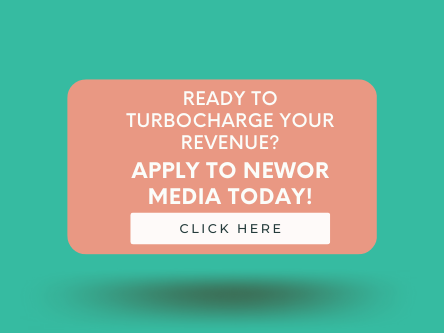
A programmatic ad auction is where ad inventory is bought and sold automatically through an ad tech platform. There are different types of programmatic ad auctions, including real-time bidding (RTB), private marketplaces (PMPs), and programmatic guaranteed (PG).
RTB auctions allow advertisers to place bids on impressions in real-time based on various targeting parameters. PMP auctions are invite-only and allow advertisers to access premium ad inventory from specific publishers. PG auctions enable advertisers to reserve specific ad inventory at a fixed price. The functionalities of these different types of auctions vary, but they all aim to improve the user experience by displaying more relevant ads.
How does an ad auction work?
An ad auction is a process that takes place each time there is an opportunity to show an ad to someone, such as when a user performs a search on a search engine. The goal is to determine which ad is the most relevant and valuable to show to that person.
The ad auction process begins when an advertiser creates an ad group in a platform such as Google AdWords, selecting relevant keywords and target countries. An ad auction is triggered when a user performs a search that matches those keywords.
In the auction, the system evaluates all the eligible ads and chooses the ones that are the most relevant to the user’s search query. Ad relevance and quality, along with the maximum bid amount set by the advertiser, are key factors in determining which ad will be shown.
The winning advertiser’s ad is then displayed to the user, with the cost per click (CPC) determined by the second highest bidder’s maximum bid. Ad performance is continually evaluated and advertisers can adjust their bids or ad content to improve results.
What is an ad quality score?
In Google Ads, the quality score is a metric that measures the relevance and quality of an ad and its corresponding landing page. It is determined by keyword relevancy, ad quality, click-through rate (CTR), and the quality and relevance of the landing page.
The quality score is an essential component of ad optimization, as it directly affects the cost per click (CPC) and the ad’s position in the search results. Advertisers can improve their quality score by optimizing their ad and landing page content, choosing relevant and targeted keywords, and improving their CTR.
The quality score determines an ad’s rank in the ad auction process, alongside the maximum bid. The formula for ad rank used to be Quality Score x Maximum Bid = Ad Rank. However, the ad rank formula now includes different factors, such as minimum thresholds, the actual context of the search, and the effectiveness of the ad extensions.
How does the quality score affect an ad auction?
The quality score is an important factor that affects an advertiser’s ad rank in the ad auction process. Ad rank is a value used by search engines to determine an ad’s position on the search results page.
The formula for ad rank used to be Quality Score x Maximum Bid = Ad Rank, where the quality score and the maximum bid were the main factors considered. However, nowadays the ad rank formula includes additional factors such as minimum thresholds, the actual context of the search, and the effectiveness of the ad extensions.
When a user enters a search query, the search engine assesses all the ads that are eligible to appear based on the advertiser’s targeting settings, budget, and other criteria. The search engine then determines the ad rank for each eligible ad, which in turn determines the ad’s position on the search results page.
For instance, if advertisers have a high-quality score and maximum bid, their ad is more likely to appear in a higher position on the search results page. However, if they have a low-quality score, even with a high maximum bid, their ad may not appear in a high position on the search results page.
Different types of ad auctions
In programmatic advertising, real-time bidding (RTB) is one of the primary methods used for acquiring inventory. However, there are several different ways of acquiring inventory in the RTB ecosystem, and each method offers unique benefits and advantages.
The different inventory acquisition methods in the RTB ecosystem include private marketplaces (PMPs), preferred deals, programmatic direct, and open exchange. Each of these methods has distinct characteristics, such as the level of control over inventory, targeting capabilities, pricing, and access to premium inventory.
As an advertiser, it is essential to understand the differences between these inventory acquisition methods and choose the right one for your ad campaign strategy.
Open Auctions
Open auctions, also known as real-time bidding (RTB), are the most traditional form of programmatic auction used to buy and sell ad inventory on an impression-by-impression basis. In these auctions, ad inventory is made available through an open exchange or marketplace, and advertisers bid in real-time for the opportunity to display their ad to the target audience.
The real-time bidding model works as follows: when a user visits a website or opens an app, the publisher’s ad inventory is available for auction. Advertisers using the open auction model bid on the available ad impressions, setting a maximum bid for each impression. The highest bidder wins the auction, displaying their ad to the user in real-time.
Open auctions are popular for many advertisers due to their flexibility and scalability. Advertisers can use various bidding strategies, such as cost-per-thousand-impressions (CPM) or cost-per-click (CPC), to optimize their ad spend and effectively reach their target audience.
PMP (Private Market)
A private marketplace (PMP) is a closed or invite-only programmatic auction. Here, ad impressions are purchased or sold through programs on an impression-by-impression basis between exclusive parties. In a PMP, publishers offer their premium ad inventory to a select group of buyers, who can then place bids on that inventory using a specific bidding strategy.
Unlike open auctions, where ad impressions are available to any interested advertiser, a PMP is a more exclusive marketplace where publishers work directly with agencies, networks, or demand-side platforms (DSPs) to offer their inventory to a select group of buyers.
PMPs offer a number of benefits over open auctions, including better targeting capabilities, increased transparency, and higher-quality inventory. Advertisers have the ability to target specific audience segments, such as demographics or interests. They can use various bidding strategies to optimize their ad spend and maximize their return on investment.
Preferred Deal
A preferred deal is a programmatic auction where a publisher offers premium inventory at a fixed eCPM price to specific buyers, who can bid at or above the set eCPM. It’s a private programmatic auction where a buyer can secure high-quality inventory at a fixed price, and the publisher can ensure their inventory is sold at a guaranteed rate.
Preferred deals benefit publishers who want to sell their premium inventory while maintaining control over pricing and transparency.
Programmatic Guaranteed (Programmatic Direct)
Programmatic guaranteed is a deal where a publisher and advertiser negotiate directly to determine an ad inventory fixed price which an advertiser directly purchases. Unlike other programmatic auctions, there’s no auction.
The automation replaces the manual insertion order (IO), allowing the publisher to regulate the inventory price. Programmatic guaranteed enables advertisers to purchase premium inventory directly and secure specific ad positions.
Conclusion
In conclusion, ad auctions are a critical component of programmatic advertising, and they determine which ad will be displayed to a particular user. There are several types of programmatic ad auctions available, each with its benefits and functionalities. Open auctions, PMPs, preferred deals, and programmatic guaranteed are all types of auctions available.

